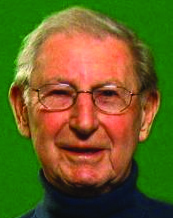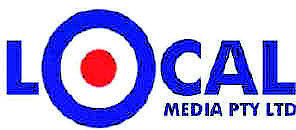
Peter Isaacson. Proprietor 1977-1989
Victorian publisher Peter Isaacson purchased the Sunday Observer newspaper in 1977. At the start of the newspaper’s life in September 1969, Isaacson (along with Progress Press and Waverley Offset Printers) had been a contract printer of the Observer under the proprietorships of Gordon Barton and Maxwell Newton, until each of them took possession of their own presses.
Barton ran his Observer from 1969 to 1971, and Newton published the title from 1971 until 1977, when the liquidators sold the masthead to Isaacson for $500,000 (later adjusted to $425,000). Isaacson’s financial adviser, Ron Pitcher, was said to be deeply opposed to the purchase.
Denis Warner, authoring the Isaacson biography Pathfinder, noted: At no time could [Pitcher] see the company being strong enough to beat off the opposition he so wisely foresaw. But Isaacson wanted to do it although, wehen he looked at Newton’s offices, he was appalled.
“The walls were decorated with the lewdest photographs, cartoons and drawings imaginable.” Staff morale had fallen to rock bottom. As for the paper itself, Newton once said that a Sunday newspaper should comprise tits, trots, TAB and TV, quoted Warner. “Most of the copy, as Isaacson had indicated, came from a vast number of pornographic publications produced abroad and rewritten in Newton offices. This was supplemented with local crime, sport and political rumour. Much of the advertising came from brothels and massage parlours and almost all the rest, as Isaacson discovered later, was on contra.
“Cathay Pacific provided $5000 worth of air tickets in exchange for $10,000 worth of advertising space. The Windsor Hotel took $5000 worth of advertising space and in exchange provided accommodation worth $2500. Ireland’s Florist shop received $52.80 of advertising space each week in exchange if goods to the value of $26.40. So notorious was the use of contra that when Newton built a home in Toorak, it became known appropriately as Contra Castle.
“Few of the goods Newton’s Sunday Observer acquiored by contra were needed by the newspaper, which simply sold them off, a curious way in which to finance any publication. Nearly all the newspaper’s equipment belonged to finance companies and banks. Isaacson nevertheless decided to go ahead and but the Sunday Observer for $500,000 on the assurance that the circulation was at least 135,000 a week. When the foigures were found to be rubbery, the purchase price after haggling was reduced to $425,000.”
Warner noted Isaacson’s message to readers: “We want to be a better paper, more crusading, a lively newspaper to brighten Melbourne’s dull Sundays. As long as we don’t make any mistakes just trying to change too much … ” Isaccson did not buy the other Newton offerings, Weekend Punter, Punter Monthly, Scream, Sweet, Soccer Star and Tattler. He did keep the brothel advertising for a while, because it provided cash flow. The parlour ads were sold by Lola and Bern Underwood, who brought the cash to the Porter St offices, extracted the commission and handed over the rest.
Isaacson continued with the Australian Consolidated Press arrangement of receiving an advance on the cover sales revenues, with a collection fee deducted. At the time of Isaacson’s purchase of the masthead, Observer sales were 128,540, compared with 114,494 for the opposition Sunday Press. Isaacson moved as much as possible of the printing to his own plant at Prahran, leaving the Newton printery at Newton St, Richmond. The inside pages section was pre-printed on Friday, with the news and sporting section completed on Saturday night. The sections were collated by a small army of casual works. A fleet of contractor trucks made the deliveries to retail outlets across Victoria throughout the early hours of Sunday morning. The logistics were managed by a team headed by Alf Mullis, publisher Peter Finlayson and editor Alan Armsden.
Denis Warner continues the tale: “What Ron Pitcher calls a courageous, gutsy decision was made to eliminate the brothel and massage parlour advertising. Isaacson sacrificed a substantial revenue base by doing this. He knew that as long as he persisted with sleaze he would not get any legitimate advertising from people he felt could and should be advertising. He was also aware that brothel advertising would discourage readers and limit circulation. Though the cash flow dropped, Isaacson is intrigued that metropolitan and suburban newspapers now carry the type of advertising he rejected.”
Armsden was let go after he and Isaacson were summoned to appear before the Privileges Committee of Federal Parliament, after Armsden published a critical article. Former Prime Minister, Sir John Gorton, appeared on their behalf. They were let off. Gorton later had a column in the Sunday Observer.
Armsden, and former Sunday Observer colleague, Jim Marett, started an opposition newspaper, the Sunday Star, printed on independent presses at Geelong. It took over the massage parlour ads sold by the Underwoods. The Star lasted for just three issues.
John Monks, Editor at the Leader Newspapers suburban group, was recruited by Isaacson for the Observer Editor’s position. He was followed by Jim Lawrence.
Other members of the team included Steve Perkin, Corrie Perkin, football identity Leigh Matthews, Jenny Smith on gardening, Joan Beck (isaccson’s sister) on cooking, Lorraine Elliott on arts, and Lady Mary Montagu.
Isaacson organised for the Observer and competitor Sunday Press to jointly sell advertising to larger clients. He was unable to persuade the Sunday Press proprietors (the Herald and Weekly Times Ltd, and David Syme & Co. Ltd) to allow home delivery of the Sunday mastheads.
In what was to be a fateful year, Peter Isaacson announced in February 1989, that the Sunday Observer was to be repositioned as a quality newspaper: “There are only two ways you can go with a paper, up or down. I’m not the sort of publisher that’s going to go down market. Our paper is now a traditional tabl;oid and that’s not going to win us anything.”
End days of the Sunday Observer under Isaccson’s proprietorship came in 1989. His financial advisor Ron Pitcher confirmed that the Observer had been consistently losing money, and that in February 1989 Rupert Murdoch signalled the end of the opposition Sunday Press partnership arrangements between his Herald & Weekly Times Ltd and David Syme & Co. Ltd (Fairfax).
Murdoch was about to commence the publication of two titles: the Sunday Sun and the Sunday Herald from August 1989. Fairfax was to respond with the broadsheet Sunday Age. Isaacson’s first response was to continue the Sunday Observer as a “quality tabloid”and take it up-market. The financial reality was that Isaacson did not have the capacity – financially or commercially – to take on three opposition newspapers.
“A major Sunday newspaper war is set to break out in Melbourne,” said a February 27, 1989, press report. “Sunday Observer publisher and editor-in-chief Peter Isaacson fired the first shot yesterday, stating that News Ltd chief Rupert Murdoch had told the Fairfax group of his intention to quit their jointly-owned Sunday Press.” He said his re-launch of the Observer was “a declaration of independence”.
“I believe Victorians want an alternative to the newspapers published by News Ltd, which already contains 75 per cent of daily and Sunday newspapers sold in the state,” isaacson said in a front-page message. “It would be a tragedy for Victorians if their choice of newspapers be restricted even further.” He said there was “faith in the concept that my vigorous, creative, privately-owned Australian organisation can prosper in competition with multi-national giants controlled from overseas.”
He recited his oft-employed company line: “In that time I hace changed it from the semi-pornographic rag that it was when I took it over from the liquidator of the previous proprietor, to the creditable Sunday tabloid that it is today.”
On March 1, 1989, Isaacson stated: “From Sunday, there will be a new-look Sunday Observer waiting for you in your milk bar. It will be different from all the other Sunday papers in Melbourne. It will be a quality Sunday newspaper, quality in looks, quality in content.”
The reality that the Observer would not continue as a Sunday newspaper came within months. Isaacson hunted for potential buyers without success. Isaccson told staff about the the last issue (June 11, 1989). An industrial dispute threatened the final issue of the Sunday Observer. Chief-of-staff Geoff Strong was quoted to say that staff negotiated a “satisfactory resolution with the proprietor. “The staff voted at a 5pm meeting to continue their stop-work until satisfied with redundancy arrangemnts,” noted The Canberra Times. “The paper is closing because three new Sunday papers in August will saturate the market.”
An 84-page final issue went to press with the headline ‘Goodbye’. Writers included Peter Costiganm, Ita Buttrose and Lorraine Elliott. Isaacson said: “Although I am sad at closing the Sunday Observer I look back with pride with what has been accomplished since we obtained the title from the receivers of the previous owner.” Isaacson regretted that he had rejected a $2.5 million written offer for the Observer from Mark Day and Owen Thompson, owners of Truth.
Similarly, Isaacson had declined an offer from Eric Beecher to swap 50 per cent of the Southern Cross suburban newspaper group for 50 per cent of the about-to-be-launched Melbourne Weekly.
Peter Isaacson’s career had started as a teenager as a messenger boy at The Age, where his mother Caroline (‘Lynka’) was a journalist on the sister newspaper, The Leader. Lynka and father Arnold were married at the Dalston Synagogue (UK) on March 30, 1919. Peter was born on July 31, 1920. He left Brighton Grammar School at age 16, joining the Advertising Department of the broadsheet, then headquartered in Collins St.Simultaneously, Peter studied at Dr Hall’s Coaching Academy, where he matriculated. He later enrolled at the University of Melbourne.
For a short while, Peter Isaacson worked with a small advertising agency with Paul Freedman. In his young twenties, Pilot Officer Peter Isaacson, DFM, was the well-publicised airman, flying his Lancaster over Germany, and then under the Sydney Harbour Bridge in a Government War Bonds fundraiser. Isaacson had been selected for the Royal Australian Air Force Crew Reserve in the middle of 1940.
With £400 in deferred pat from the RAAF, Peter Isaacson bought the Elsternwick Advertiser newspaper which had only been published for two issues by Noel Abthony and John Craig. Isaacson’s first issue was 12 pages, and he paid £42/15 for the printing of 10,000 copies. Home distribution cost him £4/12. Pre-press was completed by The Argus. Isaacson mutiplied his newsprint rations by re-plating the newspaper as the Caulfield Advertiser and the Carnegie Courier, later adding the Brighton Banner and the Prahran News. He merged them on October 17, 1947, as the Southern Cross, taking over from Parkinson and Brookes, printers.
Isaacson built an Australian publishing empire of more than 60 titles, selling his company in the 1990s to the O’Reilly family’s Australian Provincial Newspapers. Peter Isaacson lived to the age of 96 in 2017.
